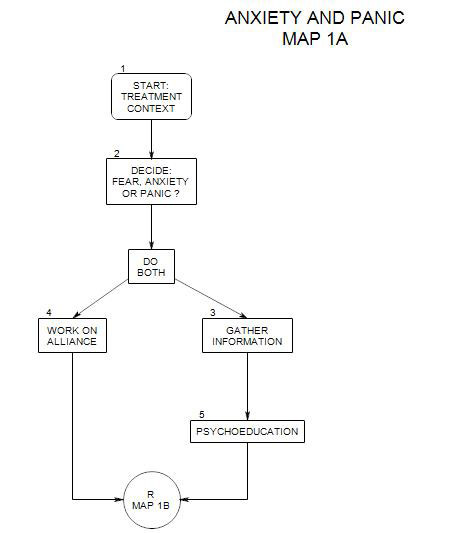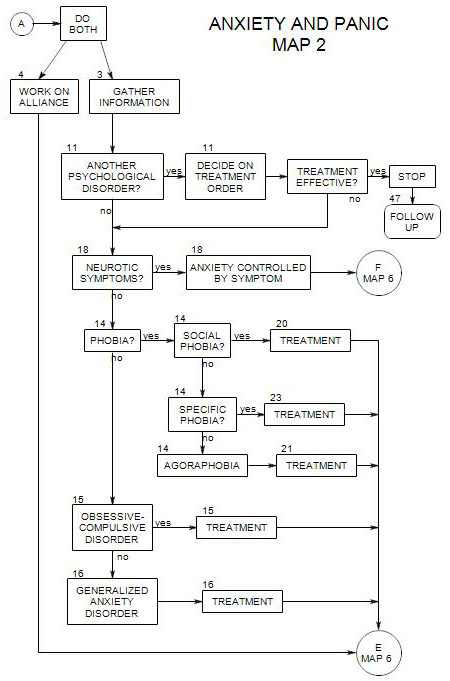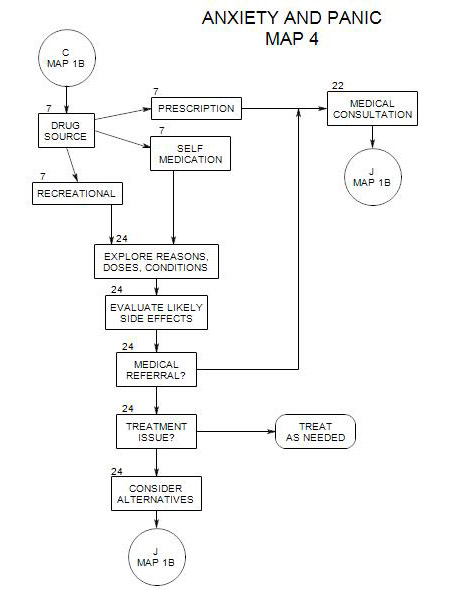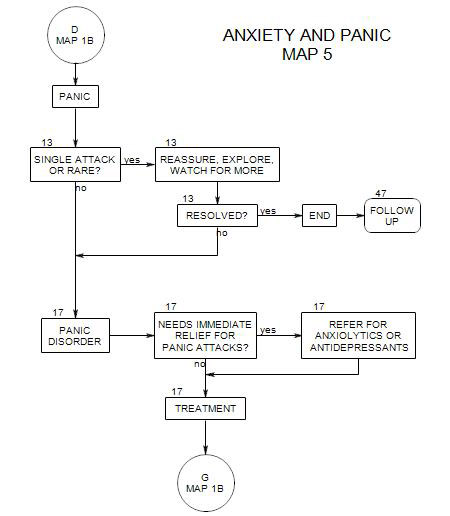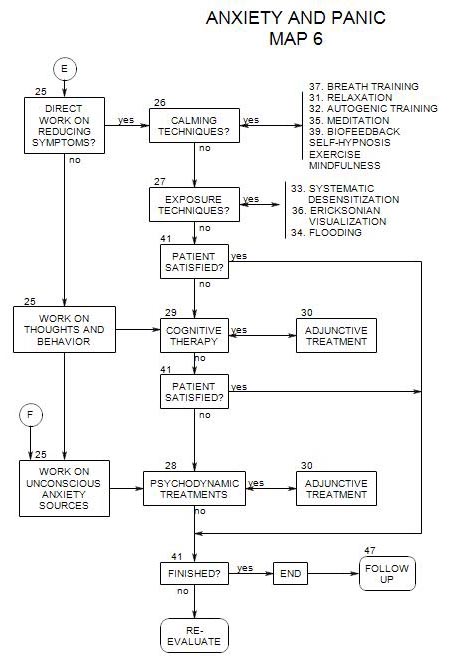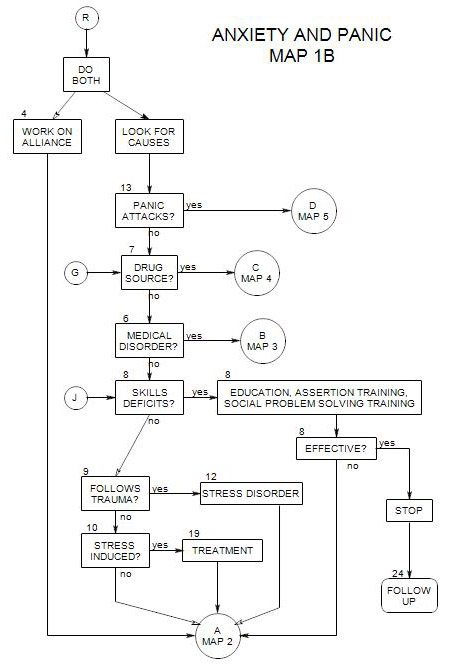
SECTIONS: 4 | 6 | 7 | 8 | 9 | 10 | 12 | 13 | 19 | 24
Treatment happens in context, either the context of an intake with a new patient or of ongoing treatment.
If you are in a start-up context, this material can be used in conjunction with the New Patient map.
If you are already treating a person when his/her anxiety becomes apparent, the prior treatment is the context. And when there is ongoing treatment, there is already a kind of treatment that you are providing. The context sets a tone and provides a style and expectation that should be considered when you want to change the direction of treatment.
The broad classes of anxiety treatment are shown on Map 6. They correspond to similar approaches for the treatment of other disorders, and more generally, to treatment preferences of clinicians. You probably will want to continue with treatment that is consistent with the form you have previously been using.
If the patient is already being treated for anxiety, it is also possible to integrate another kind of treatment into the one you have been using, or to make a switch, if necessary. Some of these alternatives are discussed in Section 25.
